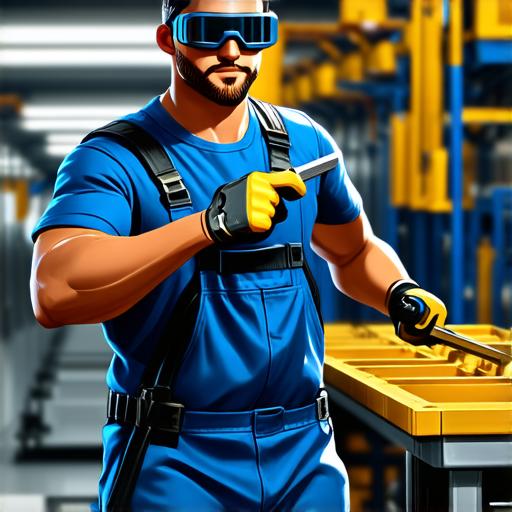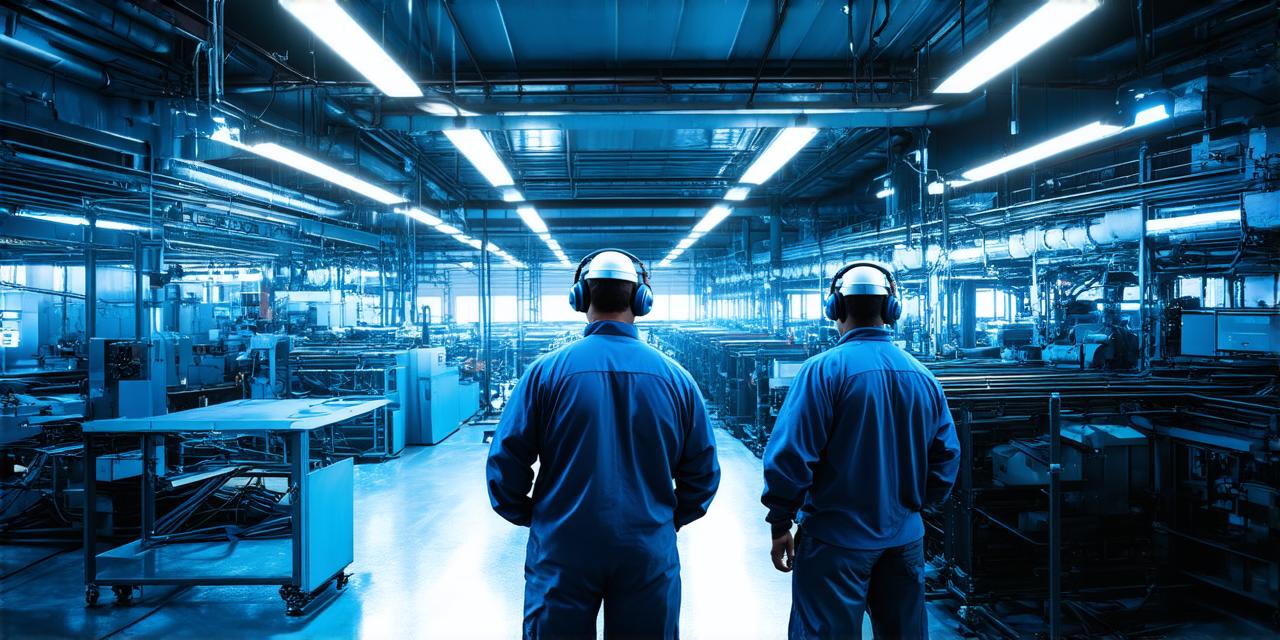Introduction
Augmented reality (AR) technology has been rapidly gaining traction in recent years, particularly in industries such as manufacturing and construction. By overlaying digital information onto the real world, AR enables workers to visualize complex designs and processes, improving efficiency, accuracy, and safety on the factory floor.
In this comprehensive guide, we will explore how AR is being implemented in the manufacturing industry, highlighting its benefits and use cases. We will also delve into some of the challenges faced by manufacturers when adopting AR technology and discuss strategies for overcoming these obstacles.
AR in Manufacturing: An Overview
AR technology has the potential to revolutionize the manufacturing industry in several ways. Firstly, it can improve production efficiency by allowing workers to visualize complex designs and processes in real-time. This reduces the need for physical prototypes, which can be time-consuming and expensive to produce. AR can also help identify potential issues before they become problems, reducing downtime and improving product quality.
Real-Life Examples of AR in Manufacturing
Many manufacturers are already using AR technology to improve their operations. One such example is GE Aviation, which has implemented an AR application called “Workbench,” allowing maintenance technicians to visualize aircraft components and their assembly processes in real-time. This has improved efficiency and reduced errors, resulting in a 25% reduction in repair time for some components.
Another example is Toyota, which has implemented an AR application called “Toyota Assembly Visualization,” allowing workers to visualize the assembly process for vehicles in real-time. This has improved quality control and reduced waste, resulting in a 15% reduction in defects and a 20% reduction in material usage.
The Benefits of AR in Manufacturing: A Closer Look
Improved Efficiency
AR technology can significantly improve efficiency in the manufacturing process by allowing workers to visualize complex designs and processes in real-time. This reduces the need for physical prototypes, which can be time-consuming and expensive to produce. By overlaying digital information onto the real world, AR enables workers to identify potential issues before they become problems, reducing downtime and improving product quality.
Enhanced Worker Safety
AR technology can also enhance worker safety by providing workers with real-time information about their surroundings. This can help prevent accidents and injuries on the factory floor. For example, AR can be used to highlight potential hazards such as electrical or chemical hazards, enabling workers to take appropriate precautions.
Improved Communication and Collaboration
AR technology can also improve communication and collaboration between workers and teams by enabling workers to share information in real-time. This can be particularly useful in situations where workers are working remotely or in different locations. By providing a shared visual representation of the manufacturing process, AR can improve decision-making and problem-solving capabilities, resulting in a more efficient and effective workflow.
The Challenges of AR in Manufacturing: A Closer Look
Cost
AR technology can be expensive to implement, particularly for smaller manufacturers with limited budgets. The cost of hardware, software, and maintenance can be a significant barrier to adoption.
Training and Adoption
Implementing AR technology requires training workers on how to use the technology effectively. This can be time-consuming and expensive, particularly for larger manufacturers with complex production processes. Additionally, getting workers to adopt new technology can be challenging, particularly if they are resistant to change or lack the necessary technical skills.
Integration with Existing Systems
AR technology needs to integrate seamlessly with existing manufacturing systems to be effective. This can be a challenge, particularly for manufacturers with outdated or legacy systems. Integrating AR technology with existing systems can be time-consuming and expensive, requiring significant resources and expertise.
Strategies for Overcoming Challenges in AR Adoption
Investing in Training and Support
Manufacturers should invest in training workers on how to use AR technology effectively. This can include providing hands-on training, online courses, and ongoing support to ensure workers have the necessary skills and knowledge to use the technology effectively.
Piloting AR Technology in Specific Areas
Manufacturers should consider piloting AR technology in specific areas of their operations to test its effectiveness and identify areas for improvement. This can help manufacturers determine which areas of their production process are best suited for AR technology and enable them to refine their implementation strategy accordingly.
Collaborating with Technology Partners
Manufacturers should consider collaborating with technology partners to ensure they have access to the latest AR technology and expertise. This can include partnering with AR software providers, hardware manufacturers, and consulting firms to develop a comprehensive AR implementation strategy.

Summary
Augmented reality technology has the potential to revolutionize the manufacturing industry by improving efficiency, enhancing worker safety, and improving communication and collaboration between workers and teams. While there are challenges associated with adopting AR technology, manufacturers can overcome these obstacles by investing in training and support, piloting AR technology in specific areas, and collaborating with technology partners.
